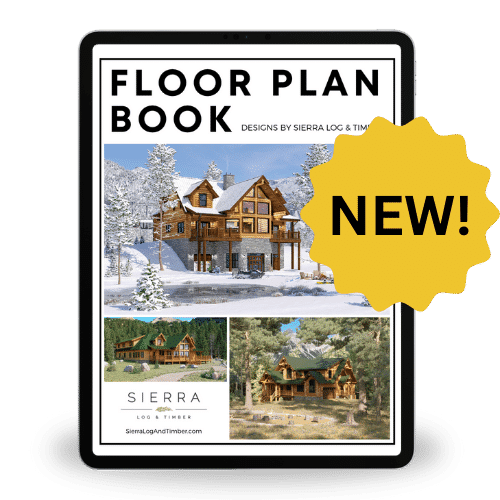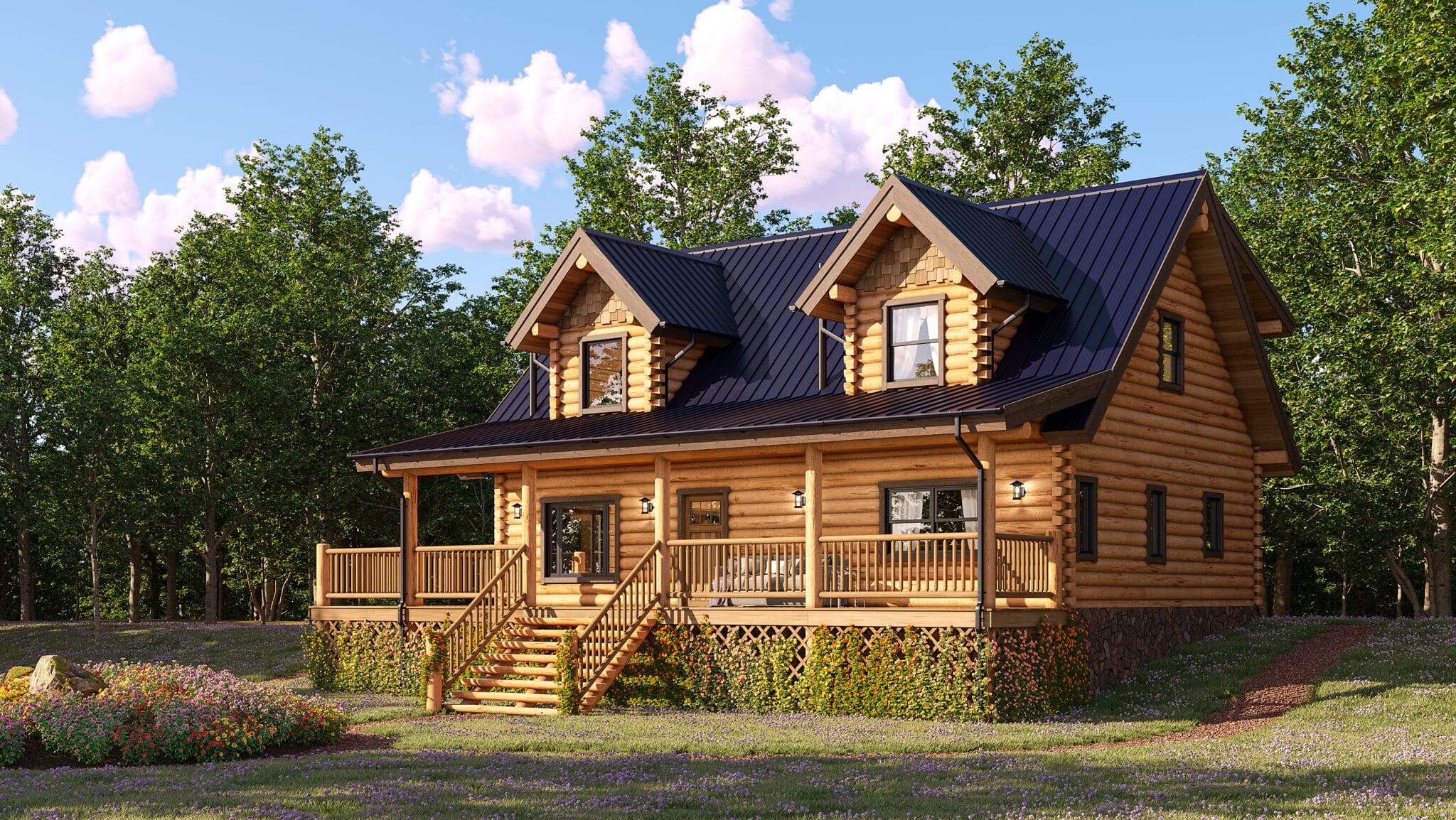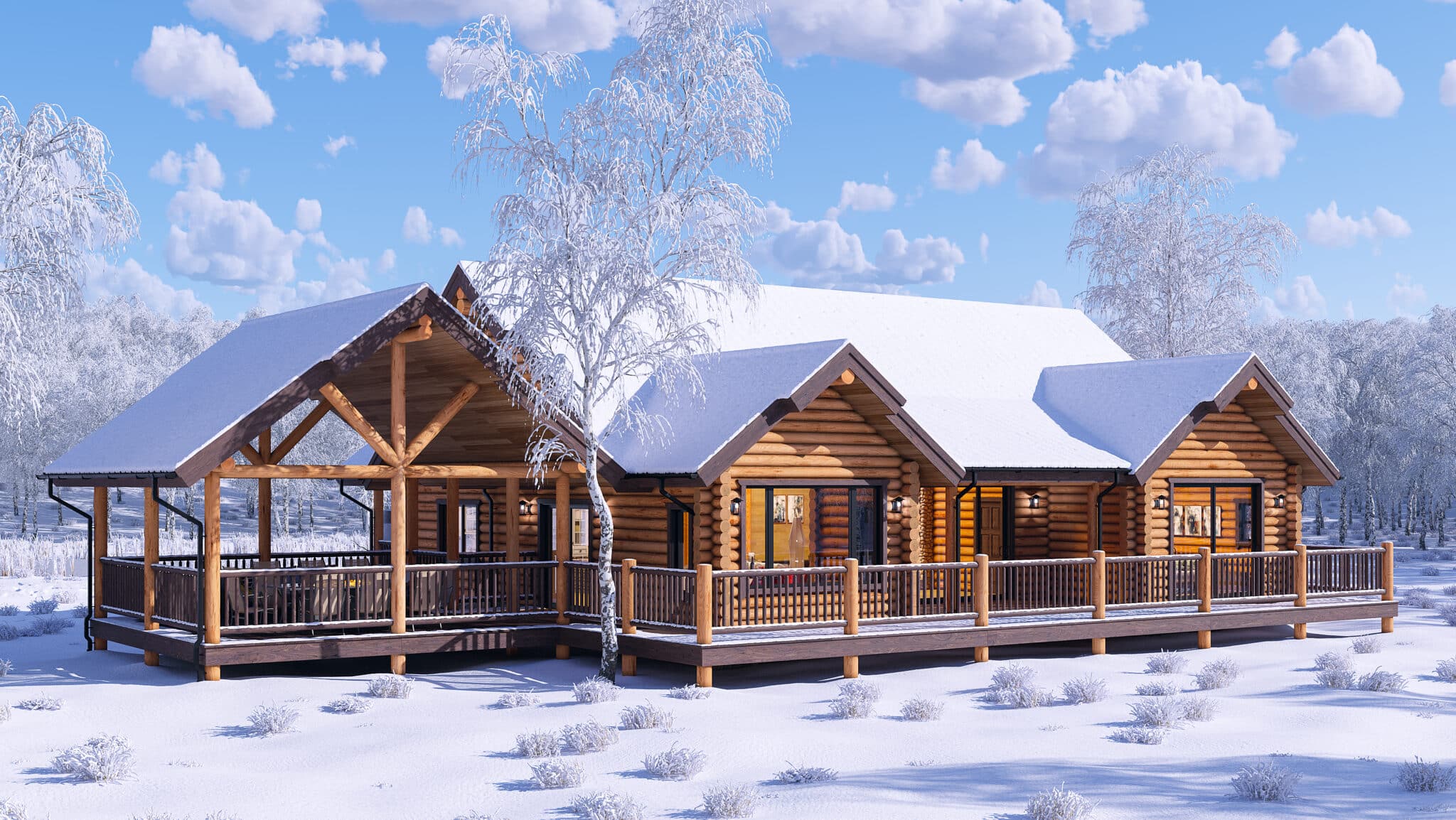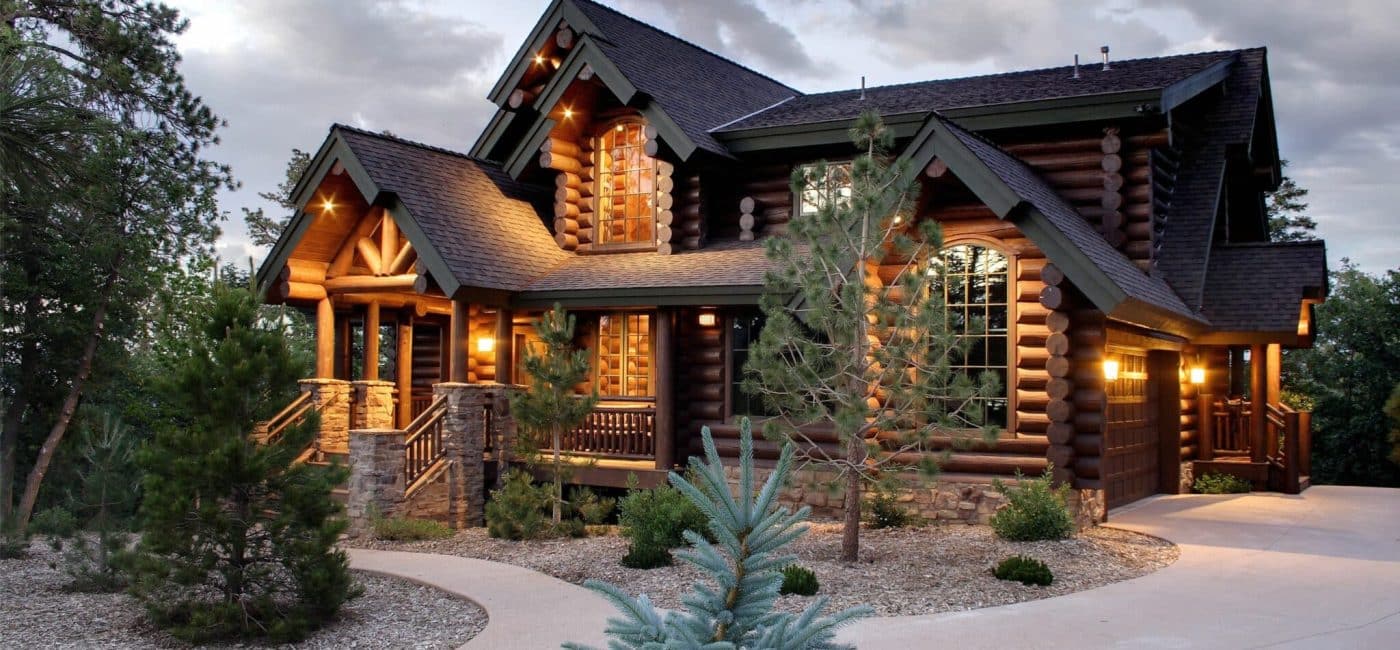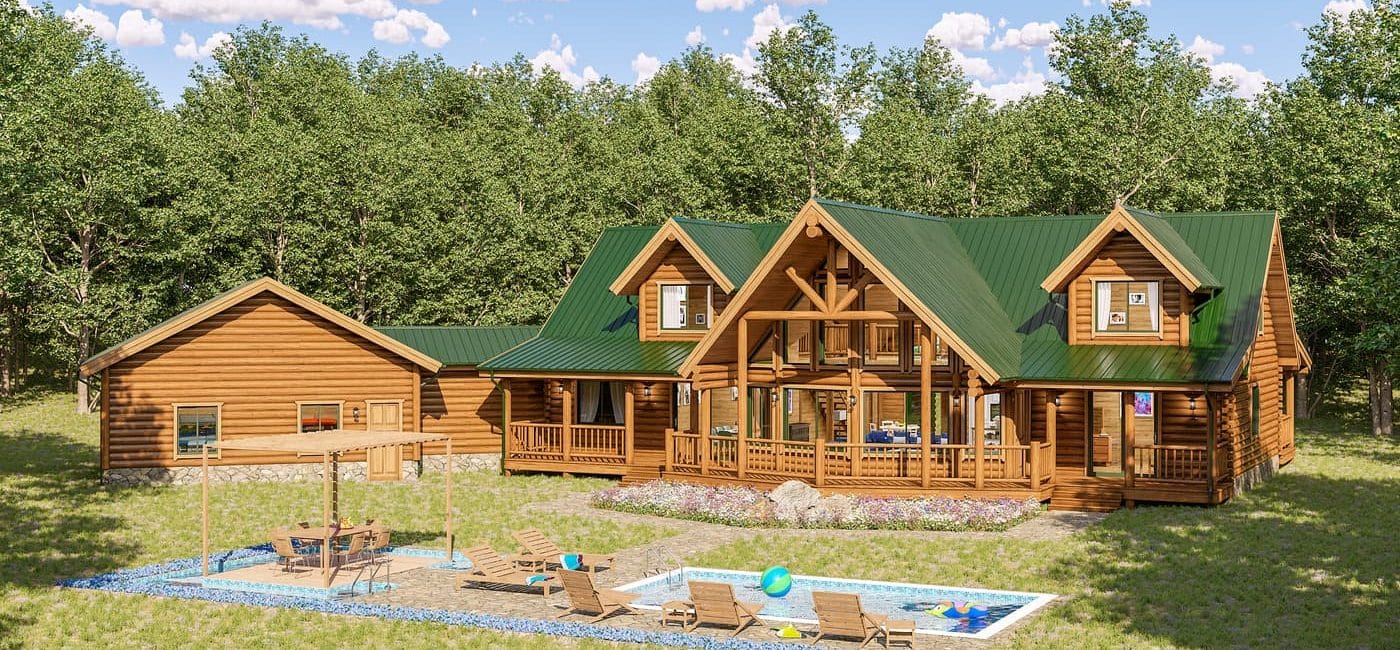How to Select the Correct Profile for Your Log Home Floor Plans
Building a log home is an exciting investment that you will be able to cherish for years to come. The style profile of logs you choose for your home can determine its overall look and feel. There is a wide range of log and timber profiles you can choose from when building your dream home. Each log profile has its own unique advantages and disadvantages that affect your home’s aesthetics and structural stability. Here are many things you need to know to select the correct log or timber profile for your log home floor plans.
Shape
One of the first things you may want to consider when selecting the correct profile for your log home floor plans is the shape of the logs. When selecting among milled log profiles there are three shapes to consider: round, timber and Dlogs. There are pros and cons to each.
Round logs offer a classic look and feel with numerous benefits in energy efficiency and sound insulation. Be aware that the top log radius gathers dust, every log, floor to ceiling, which could be 24’ up. So if you are a “cleany” that might drive you crazy. As the round logs have the most wood in them and require the most crafting, they are the most costly log shape to use.
Timber logs are flat on the inside as well as the outside which makes decorating the inside, hanging cabinets, installing trim (and just about everything else) easier. To give them added character and rustic style, we at Sierra Log & Timber hand-hewn the flat surfaces which most clients prefer. As the timber logs have the least amount of wood, which excludes the radius inside and out and require the least amount of crafting, they are the most economical log shape to use.
A Dlog is a highly popular choice that offers the benefits of the flat interior log surface as well as the more traditional round log exterior surface. The cost of using Dlogs is between the round logs and timber logs based on the amount of wood required to make them. .
Regardless of what log shape is used, it is natural wood so the logs will require using protective sealants and treatments that require periodic maintenance.
Size
The size of the logs you choose can significantly impact your log home floor plans. The diameter and thickness determine how much wood is required to make each log shape, which has a direct correlation to the cost of each. The larger the log used the more space it reduces the living space due to the space taken up by the wall thickness.
Regardless of shape tThe larger the log, the higher the cost. It is important to make the log size proportional to the size of home being built, especially with larger homes. It looks odd to build a large home with small logs, regardless of shape.
Log Connection
Another important consideration with your log home floor plans is the log connection of the wood you choose. Where you live, and your personal preference can influence your decision. When it comes to round logs, you can choose between coped or tongue and groove. Coped logs feature a round upper layer and a concave lower layer, resulting in a wide support base. Tongue and groove logs can be stacked together to create a tight seal and structural stability.
When it comes to Dlogs and timber, you may want to consider whether to use a single or double tongue and groove. The engagement of the tongue and groove influences the control of the straightness of the logs. It can be easier to control the straightness of the log during construction with a single tongue and groove.
A double tongue and groove can provide greater energy efficiency and is better able to protect from water damage but requires a larger connection surface which reduces the stack height of round logs or requires thicker timber or Dlogs. More logs or larger logs to form the walls increases building costs. Another option is to form small dimension tongue & groove, but that makes the tongue & groove connection more fragile and more difficult to assemble the logs.
Corner Options
The choice of log connection selected at the corners will affect the appearance of your home. The shape of logs will influence the options available. For round logs, the most popular corner style is saddle notch. A vertical post at the corner is also used on occasion.
The most popular log connection for timber and Dlogs is dovetails. Vertical posts are also used, more frequently with timber logs than with Dlogs. More economical corner options are battened or butt and pass. These options are seldom used as they appear as poor craftsmanship or not as weather tight as the other options.
Customized Log Home Floor Plans
Determining the correct profile for your log home floor plans is a vital decision. The expert designers and staff at Sierra Log & Timber can help you pick the best profile for your chosen design. Choose from three beautiful styles of log profiles in various sizes. Logs feature a hand-peeled finish and are manufactured for long-lasting durability and structural stability. Request a design consultation today.


